Hagar Qim: “Standing/Worshipping Stones” – Megalithic Complex In Malta Dated To 3600 – 3200 BC
A. Sutherland - AncientPages.com - The Neolithic cultures of Malta left a legacy of some of the most magnificent temples. It is believed that ancient Malta's natural surroundings deeply inspired the building traditions of its people.
Hagar Qim - Model. National Museum of Archaeology. Image credit: Enrique Íñiguez Rodríguez (Qoan) - CC BY-SA 4.0
Ancient builders used limestone as a primary material for their creations because the country that covers over 300 square kilometers (including the outlying islands of Gozo and Comino) is basically composed of this material.
They created many megalithic temples and expressed their religious beliefs through these mighty structures. One such temple is Hagar Qim, located on the south coast of the island of Malta. It is one of the most massive megaliths and one of the best preserved.
Most temples of Malta face towards the southeast, which would have meant warmth and sunlight all year round. In the case of Hagar Qim (Haġar Qim, Qrendi), for example, evidence for the alignment with the equinoxes and solstices has been discovered by archaeologists.
Hagar Qim ruins, Malta. Image credit: jkb- CC BY-SA 3.0
It means that the calendar was of great importance to these ancient people. In one of the chambers (apses) of the main temple, there is a hole through which the rays of the rising sun fall on the summer solstice day.
Not much is known about this structure. The temple of Hagar Qim was excavated for the first time in 1839 and dated back to c. 3600 – 3200 BC. It stands on a hilltop overlooking the sea and the islet of Filfla.
Figurines Of Fat Female Bodies
During the restoration work in 1949 at Hagar Qim, four small figurines of fat women's bodies were found in this temple – now on display in the National Museum of Archaeology, Valletta.
Similar figurines were also found in several other places across Malta. This idol is believed to represent the Mother Goddess. Excavations also revealed certain features possibly associated with fertility rituals, such as statues (sculptures) with solar alignments and a megalith considered phallic. An altar with a concave top was probably used for animal sacrifices, as the animal bones were unearthed, while the screened doorways at the Hagar Qim complex may indicate possible use by oracles.
No burials exist in the temple or the area surrounding Hagar Qim, nor have any human bones been discovered in Maltese temples.
Maltese temple statuary. Figurines from Ħaġar Qim, National Museum of Archaeology of Malta. Image credit: Hamelin de Guettelet - CC BY-SA 3.0
All what is today known about the mysterious Hagar Qim site, is based on archaeological evidence and other observations made by the early excavators of the megalithic sites of Malta. It is known that
"the temples replicate the tombs. There is an abundance of pottery, and all the attendant sherds, some of which could be pieced together to form restorable jars, jugs, bowls, lids, ladles, vases, cups, large convex covers for large shallow plates, as well as lithic tools for grinding, found in situ in both temple and tomb, although the pottery in the temple appears to differ from pottery in the tomb.
Fat Lady figurines and large standing statues of same were found inside the temples.
This intriguing evidence -- the abundant querns, clay, stone and ceramic pottery, the broken sherds and small Fat Lady figurines in addition to a huge nine-foot-high standing statue of same whose damaged remains were found still standing inside the Tarxien temple, as well as damaged, almost unrecognizable remains of large Fat Lady statues still standing at Hagar Qim..." 1
The excavation also uncovered decorated pottery. The best examples can be seen at Malta's National Museum of Archaeology.
Hagar Qim, Malta. Image credit: Gerd Eichmann - CC BY-SA 4.0
The architecture of Hagar Qim is typical of prehistoric Malta. The temple is circular with a clear line of sight through the central passage, which is very different from the other temples, which have a single entrance/exit facing onto a ceremonial forecourt.
The circular rooms, with altars and some ornamental elements, are included in the complex.
The Hagar Qim's shape resembles a cloverleaf with walls consisting of two parallel walls at a distance of two meters. The length-width ratio is approximately 40 to 30 meters; some of the megalithic blocks are over six and seven meters high, which makes the tallest of any of Malta's temples.
The walls of the temple were made of several meters high stone blocks. One of the most massive is a horizontal block with a height of 3 meters. Its width is 6.40 meters, and it weighs almost 20 tons. Another of the impressive megaliths is 5.20 meters high and rises above the neighboring blocks.
Temple of Hagar Qim. Image credit: Dagmar Hollmann - CC BY-SA 4.0
Many stones are decorated with spiral designs. It is unclear whether there was once a rooftop or not. According to researchers, the walls of Hagar Qim do not seem to be made to wear megalithic roof plates.
Hagar Qim itself consists of a single temple unit. However, it is possible that the complex initially consisted of four temples, the best preserved being the southern one. Malta's structure and other megalithic temples are said to be amongst the most ancient religious sites and the oldest standing stone structures on Earth.
Malta's Neolithic builders used softer limestone for the temple's interior and hard material for the external walls. However, limestone as a building material is never hard enough to withstand rough weathering during a millennia-long period in harsh coastal conditions. The Hagar Qim structure was not able to survive in pristine conditions.
Written by – A. Sutherland - AncientPages.com Senior Staff Writer
Copyright © AncientPages.com All rights reserved. This material may not be published, broadcast, rewritten or redistributed in whole or part without the express written permission of AncientPages.com
Expand for referencesReferences:
- Betsy Ross-Edison, Seven Temples on Malta
Francis Aloisio, The Islands of Dream Speak
More From Ancient Pages
-
 Cosmic Impact Destroyed Huge Ancient City In The Jordan Valley – Evidence Has Been Found!
Archaeology | Sep 22, 2021
Cosmic Impact Destroyed Huge Ancient City In The Jordan Valley – Evidence Has Been Found!
Archaeology | Sep 22, 2021 -
 On This Day In History: King Charles II Is Restored To The Throne Of England, Scotland And Ireland – On May 29, 1660
News | May 29, 2016
On This Day In History: King Charles II Is Restored To The Throne Of England, Scotland And Ireland – On May 29, 1660
News | May 29, 2016 -
 Coca-Cola Was Invented As A Cure For Headache And Hangover In The 1880s
Ancient History Facts | Oct 23, 2017
Coca-Cola Was Invented As A Cure For Headache And Hangover In The 1880s
Ancient History Facts | Oct 23, 2017 -
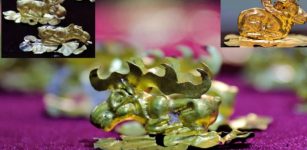 Gold Dated To Scythian-Saka Era Unearthed In Valley Of The Kings In East Kazakhstan
Archaeology | Sep 14, 2020
Gold Dated To Scythian-Saka Era Unearthed In Valley Of The Kings In East Kazakhstan
Archaeology | Sep 14, 2020 -
 Pax Mongolica: Time Of Peace And Stability That Helped To Spread Technologies And Inventions
Ancient History Facts | Mar 28, 2016
Pax Mongolica: Time Of Peace And Stability That Helped To Spread Technologies And Inventions
Ancient History Facts | Mar 28, 2016 -
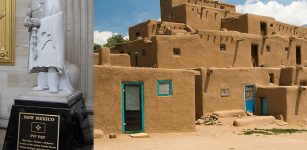 On This Day In History: Pueblo Indians Capture Santa Fe From The Spanish – On August 21, 1680
News | Aug 21, 2016
On This Day In History: Pueblo Indians Capture Santa Fe From The Spanish – On August 21, 1680
News | Aug 21, 2016 -
 Medieval Rich People Unknowingly Poisoned Themselves With Lead And Other Hazardous Heavy Metals
Archaeology | Nov 29, 2015
Medieval Rich People Unknowingly Poisoned Themselves With Lead And Other Hazardous Heavy Metals
Archaeology | Nov 29, 2015 -
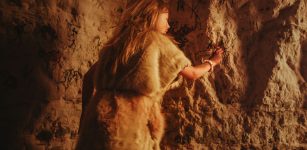 Girl’s Ancient Tooth Solves One Of The Biggest Mysteries Of The Denisovans
Archaeology | May 17, 2022
Girl’s Ancient Tooth Solves One Of The Biggest Mysteries Of The Denisovans
Archaeology | May 17, 2022 -
 Focus On Turkana Boy: Modern Human Body Evolved More Recently Than Once Believed
Archaeology | Jul 8, 2020
Focus On Turkana Boy: Modern Human Body Evolved More Recently Than Once Believed
Archaeology | Jul 8, 2020 -
 Lachit Bhorphukan: Hero From Assam Among Famous Warriors Who Stopped Mughals From Conquering Northeast India
Featured Stories | Dec 28, 2016
Lachit Bhorphukan: Hero From Assam Among Famous Warriors Who Stopped Mughals From Conquering Northeast India
Featured Stories | Dec 28, 2016 -
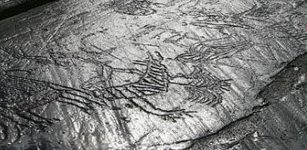 Ausevik Rock Art: Real And Mythical World Of Stone Age People Of Norway
Civilizations | Oct 2, 2018
Ausevik Rock Art: Real And Mythical World Of Stone Age People Of Norway
Civilizations | Oct 2, 2018 -
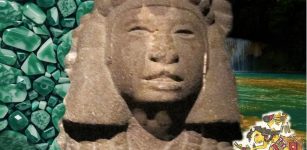 Chalchihuitlicue: Beautiful, Dangerous, Changeable And Unpredictable Water Goddess In Aztec Mythology
Featured Stories | Mar 20, 2024
Chalchihuitlicue: Beautiful, Dangerous, Changeable And Unpredictable Water Goddess In Aztec Mythology
Featured Stories | Mar 20, 2024 -
 Creepy Story Of Lucida Mansi Who Was Obsessed With Her Beauty
Featured Stories | Jul 31, 2019
Creepy Story Of Lucida Mansi Who Was Obsessed With Her Beauty
Featured Stories | Jul 31, 2019 -
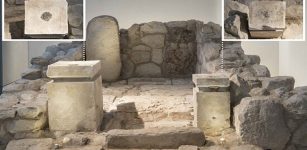 Judahite Shrine Of Biblical Arad Reveals Ancient Use Of Cannabis And Frankincense
Archaeology | Jun 2, 2020
Judahite Shrine Of Biblical Arad Reveals Ancient Use Of Cannabis And Frankincense
Archaeology | Jun 2, 2020 -
 Forest In Ancient Beliefs: Powerful Realm Of Good And Evil, Ghosts, Gods And Monsters
Featured Stories | May 19, 2016
Forest In Ancient Beliefs: Powerful Realm Of Good And Evil, Ghosts, Gods And Monsters
Featured Stories | May 19, 2016 -
 Artifacts From King Henry VIII’s Warship The Mary Rose – Analyzed
Archaeology | Apr 28, 2020
Artifacts From King Henry VIII’s Warship The Mary Rose – Analyzed
Archaeology | Apr 28, 2020 -
 CT Scan Reveals Repairs And Damage Of 1,300-Year-Old Three-Headed And Six-Armed Statue
Archaeology | Feb 23, 2017
CT Scan Reveals Repairs And Damage Of 1,300-Year-Old Three-Headed And Six-Armed Statue
Archaeology | Feb 23, 2017 -
 Lost Ancient Pyramid City As Big As Manhattan Discovered In Mexico
Archaeology | Feb 17, 2018
Lost Ancient Pyramid City As Big As Manhattan Discovered In Mexico
Archaeology | Feb 17, 2018 -
 Scientists Question Whether Meat Eating Really Changed Human Evolution
Archaeology | Jan 25, 2022
Scientists Question Whether Meat Eating Really Changed Human Evolution
Archaeology | Jan 25, 2022 -
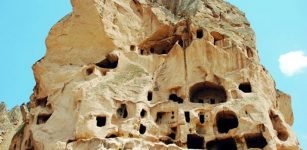 Cappadocia And Huge Unique Selime Cathedral
Featured Stories | Mar 19, 2019
Cappadocia And Huge Unique Selime Cathedral
Featured Stories | Mar 19, 2019





